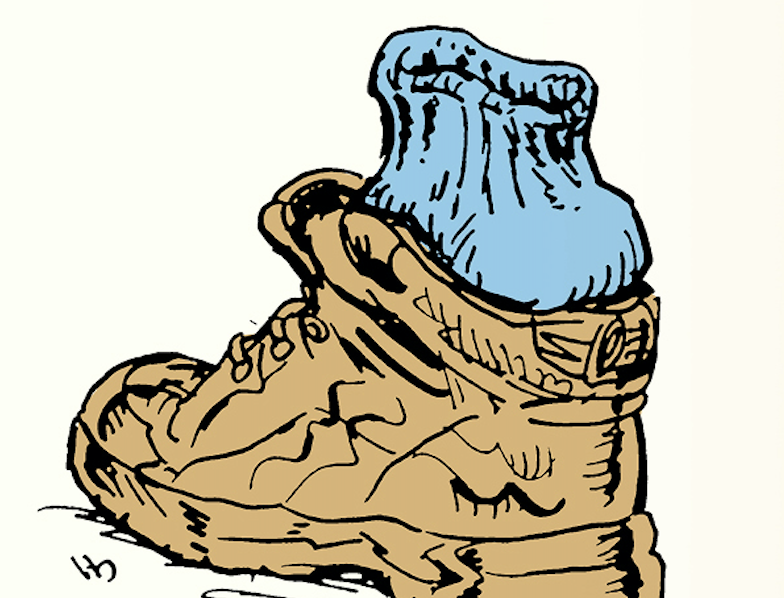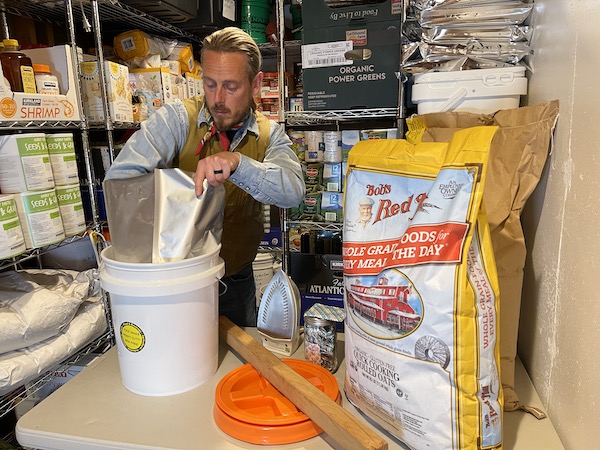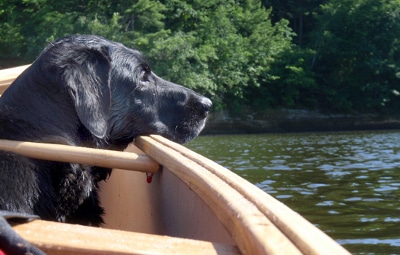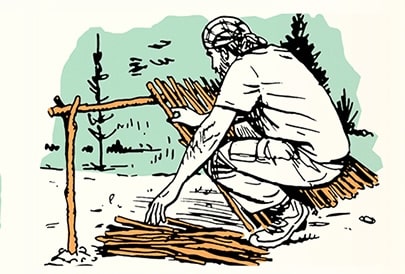
There is no such thing as a tippy canoe…only tippy paddlers.
I hear it all the time…”Canoes are tippy.” “Ooh, that’s a really tippy canoe.” “Every time I get in a canoe I end up swimming…”
My response is always the same.
Me: “How wide is your canoe?”
Wet Canoeist: “Oh, I dunno. About three feet?”
Me: “Right. How wide is your bicycle?”
W.C.: “Huh?”
Me: “C’mon, how wide?”
W.C.: “One, two inches maybe.”
Me (and this is where the idea hits them between the eyes): “Is your bicycle tippy?”
W.C.: [stunned silence…then recognition…then a sheepish grin]
No one ever says their bicycle is tippy, but something 20-30 times wider is? Something’s wrong with this logic. True, a bicycle has two gyroscopes attached which give the bicycle inherent stability, but that’s a small matter. The trick to a stable canoe is to know how to keep things where they belong.
I use a mnemonic phrase. If it’s a group of men, I tell them to always remember this: “nose over navel, navel over nuts (or nads works too).” If there are women present, I use a more gentlemanly but less memorable “nose over navel, navel over the spot between your knees.” Sometimes one of the women, usually a woman with some life experience, says, “You could just say ‘nuts.'”
That makes me blush, which makes them all laugh. I love teaching.
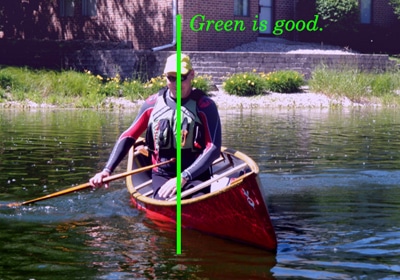
You’ll notice that even though the boat in the above picture is only 26″ wide and the gunwale (the wood part) is almost underwater, the boat is stable. That’s because if you drew a line from my nose to the center of the earth, that line would parallel my navel and my (go)nads. That’s the ultimate stability, irrespective of the angle of the boat relative to the water–hence the green line. You’ll also notice that I’m not even touching the top grip of the paddle at this point. No need: the boat is stable.
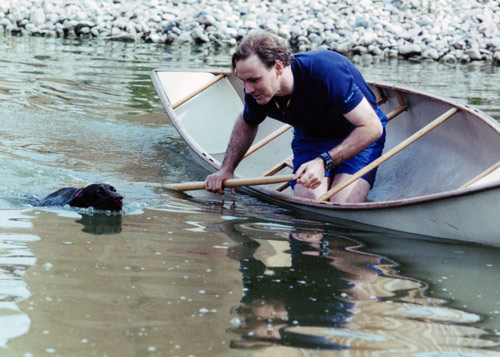
This older picture illustrates my point rather nicely. I am not wearing a lifejacket (I caught it big time for that as it was in the newspaper), and I had (lots of) hair then. My pointer, Winnie (R.I.P.) loved to swim next to me. There’s no drama here…I’m totally in control of my canoe, even if the gunwale is almost underwater. That’s because my body’s in the green zone.

But what if the N-N-‘N line goes off plumb? You go into the red zone. Notice that in the picture above I need my paddle in the water to keep from going all the way into the drink. In this case I placed my head outside the gunwales to illustrate the point that you shouldn’t do that. Only by creating a temporary outrigger with my paddle do I avoid a swim.
Which leads to a question that would naturally come up at this point: “If all you have to do is keep your N-N-‘N line perpendicular to the surface of the water, why does anyone ever tip a canoe?” Because there are forces outside our control: waves, wind, currents, and any other force that nature will apply, including a person you’re trying to rescue, or yourself when you lean over to grab that three-pound smallie. You need to find a way to get your body back to where it needs to be. The way to do that is called a brace.
Anyone who has done a belly-flop off a 30-foot cliff knows the density of water. It’s dense—really. A brace allows you to use the density of water to return you to your original green zone position, by placing the paddle with the blade parallel to the surface of the water, pushing down and using your lower body (your knees and hips) to put your body back where it goes.
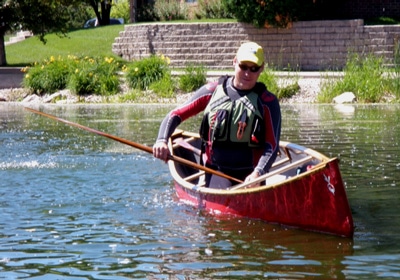
The key to learning a brace is practicing when you don’t have to in conditions that are conducive to learning. Warm water and a nice sandy beach are great places to try this, because the price of failure (and you will fail) is a damp body and a slightly bruised ego. Like any skill, it has to be reflexive. By the time your primate brain says to itself, “Goodness, I think I need to try that brace thing I read about on the Art of Manliness,” your lower level brain will have accomplished the task. Or if you didn’t practice…sploosh.
The fatal flaw is to not commit to the paddle. You’ll notice that in the red zone picture I’m putting a lot of weight on my paddle. You gotta lay it out there and get the weight off your lower body so it can reposition the boat quickly. Then and only then can you give it a good shove and get your upper body back where it goes (N-N-‘N position).

In this case, a baby wave is threatening. I lean into the wave to counteract its effect and brace, getting my body back to where it needs to be (it’s on its way back, trust me). At this point, I could do something really dumb: lift the paddle blade out of the water without turning it so the surface is no longer parallel to the surface of the water. Remember, water is dense. If I do that, I’ll just pull myself right into the water. Turning the paddle 90 degrees so that the blade can slip out of the water is highly recommended unless you are hot and want to cool off a bit.
This is a skill that is much easier to demonstrate than it is to describe. There are resources online that can give you a few hints. Below is a quick video demonstrating some of what we just talked about:


